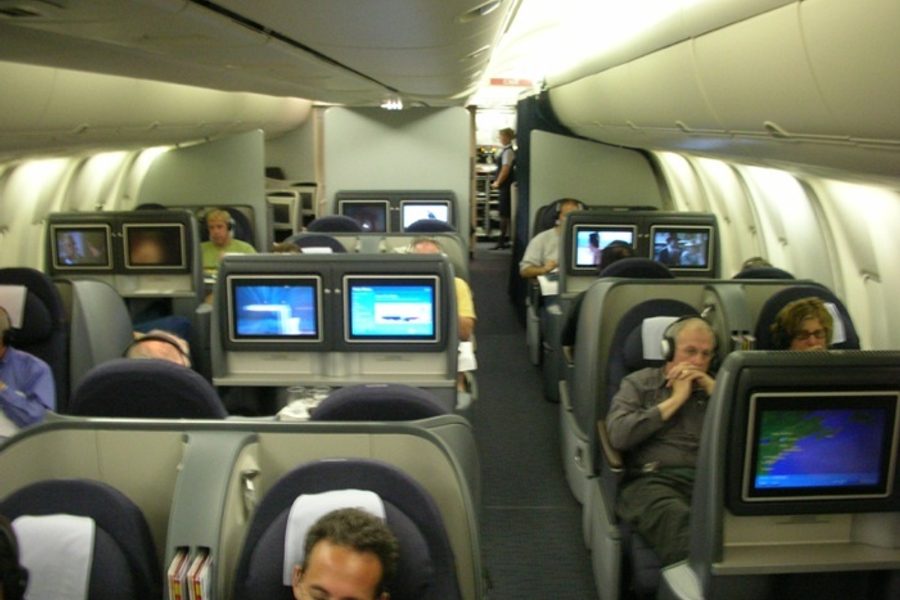
After United Airlines tried to impose “involuntary furloughs” on nearly 700 members of the Association of Flight Attendants (AFA) in January, aggressive pushback from the labor union forced a compromise late last week, according to labor and management representatives.
Open conflict between AFA and United erupted January 15 with news that the airline company aimed to bypass the existing collective bargaining agreement and force as many as 685 attendants off the job — for good, unless they are recalled by the company. United, which is currently laboring to complete its 2010 merger with Continental Airlines, sought to soften the blow by offering the affected United attendants similar jobs at Continental, but AFA leaders were angered by what they saw as an end run around their contract.
But an “agreement in principle” to end the conflict and provide better job protection for AFA members was reached February 7, reports union spokesperson Christopher Clarke. While some details are still being negotiated, the compromise will reduce the likelihood of job losses and offer union members broader pay and benefits protections, he tells Working In These Times. “It’s not meant to fix the underlying problem, but to mitigate” the effects on individual attendants, he says of the February 7 agreement.
By the “underlying problem,” Clarke is referring to a five-year effort by United to eliminate attendant jobs. Airline employment in the country overall has been falling in recent years, with more than 100,000 full time equivalent employees, or FTEs, eliminated since 2000, according to federal Bureau of Transportation Statistics (BTS) data (the Bureau counts two part-time workers as one FTE). That trend is expected to continue, and the outlook for employment as an airline attendant in the next ten years is not good, advises the Department of Labor’s Bureau of Labor Statistics. The number of attendant jobs is expected to fall by 7 percent through 2022, the Bureau estimates.
Thus far, the combined United-Continental workforce has remained relatively stable through the merger process, according to the BTS. Measured by FTEs, United employed 81,880 workers in 2013, down by about 500 over 2012. But United has slowly cut attendant jobs since 2009 on the grounds that modernization of the company’s air fleet was reducing the need for attendants, Clarke says.
That battle has been complicated by the merger with Continental, which left United with two separate groups of unionized AFA members — one of about 13,000 from the old United Airlines and another of about 12,000 from the old Continental. Protracted negotiations are underway to merge the two groups’ collective bargaining agreements. In the process, the company is trying to shrink the old United side of the attendant workforce while enlarging the Continental side, Clarke says.
Union members were incensed by the company’s unilateral move, outside of this bargaining process, to furlough the 685 members, Clarke says. In response, the union filed a grievance and threatened legal action. That was enough to force a compromise that will reduce the number of involuntary furloughs by about 50 percent and provide new job protections for the remaining attendants, he says.
“It’s not perfect, but it’s better” than United’s earlier demands, Clarke says. Many of the 685 workers will likely end up accepting jobs on the Continental side in order to avoid being furloughed indefinitely, he suggests, but they will do so under better terms negotiated by the union than they would have received under United’s previous offer. Others will have broader opportunities to enter the company’s “partnership” job sharing program, which allows multiple attendants to split a full-time position, he says.
“AFA was able to engage management in meaningful discussions on how to ensure that no flight attendant is forced out in the street without a paycheck,” AFA International President Veda Shook stated in a press release.
United spokesperson Megan McCarthy would not respond in detail to inquiries from Working In These Times. She provided only this official e-mail response to requests for comment: “We are pleased we came to an agreement that will benefit our flight attendants.”
In the midst of AFA-United conflict, the company reported strong profits for the year. According to a January 23 report, profits for 2013 amounted to $571 million, compared to a loss of $723 million in 2012. As one of the accomplishments for the year, the company cited success in negotiating new combined labor contracts for about 28,000 workers represented by the International Association of Machinists and Aerospace Workers (IAM). In late 2012, a similar combined labor contract was ratified to cover about 10,000 employees represented by the Air Line Pilots Association union. Combined contracts for AFA units, and for technicians represented by the International Brotherhood of Teamsters, remain under negotiation, according to United.
How the February 7 agreement will work out in practice is not entirely certain right now, Clarke concludes, and the union intends to proceed with a contract grievance against United until the situation is more settled.
Full disclosure: AFA is a unit of the Communications Workers of America, a sponsor of In These Times. The IAM is also a sponsor. Sponsors have no role in editorial content.







